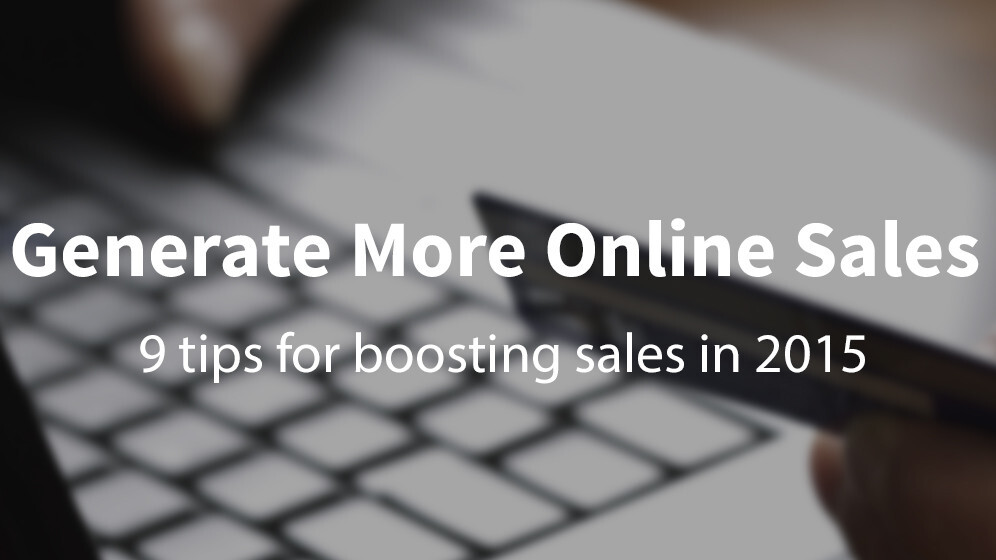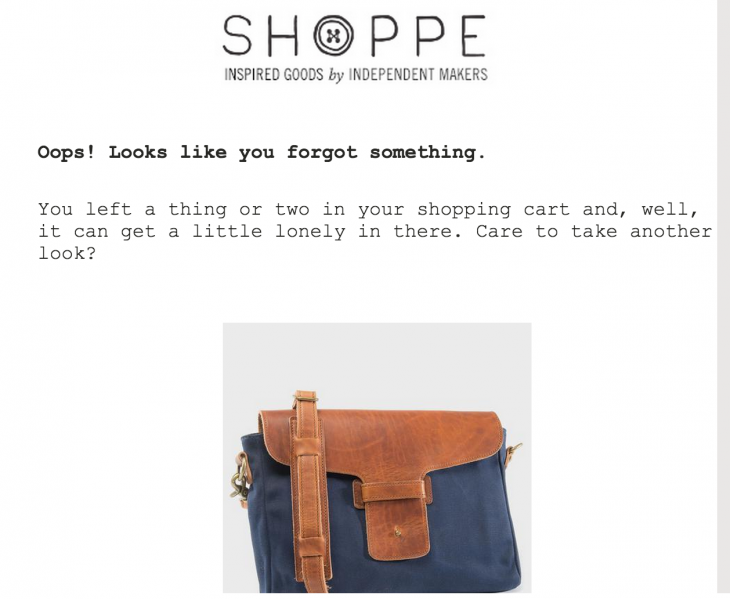
Paul Rogers is an experienced ecommerce customer acquisition consultant who works with retailers from all over the world, primarily on the Magento platform.
Following on from the busy holiday peak, now is the perfect time to start thinking about how you can generate more revenue via your e-commerce website in 2015. We’ll focus on growth opportunities in both customer acquisition and customer experience.
Here are a few extra-revenue generating tips to think about, if you’ve not already, as we enter the peak trading period.
Capitalize on peaks
If you’re able to provide the customer with more options that are capable of saving them time, you’re simply more likely to convert them (especially around peak times).
Here are some examples of potential add-ons that could simplify the experience for your customers:
Offer same-day delivery
If you’re able to negotiate a good price with your delivery company, same day delivery is another great value-add for customers, even if you pass the cost onto them.
This is even more valuable when you get nearer to Christmas and people are worried about getting items in time.
Offer click n’ collect options (for pureplay retailers too!)
These days, you don’t have to have physical retail outlets to offer click n collect as a delivery option – you can use services like CollectPlus, which allows you to collect and return items to high street stores, even though you didn’t purchase via them.
John Lewis were reported to do more ‘click n collect’ purchases than home deliveries during the festive period this year, which represents a major shift in delivery methods associated with online retail and illustrates the value CNC offers to consumers.
Retain customers leaving the site
Send abandoned cart emails
Abandoned cart emails represent a good source of qualified, engaged users, as the people that have entered your basket/gone to checkout will generally have purchasing intent. The trickiest part of the process is getting the email address (unless you’re asking for the email at the first possible point).

You can either write a script that grabs the email address once the user has inputted it, or have an initial stage that just requires the email address and use something like SeeWhy to get the email address and trigger the email.
eDigitalResearch and IMRG reported that 77 percent of online shoppers abandoned their baskets in 2013, while more than 13 percent of abandoned cart emails result in the user clicking back through to the website.
You may want to offer a discount as part of the email, as this is going to make the user more likely to click back to the website and convert. Kate Spade are a good example of this. The company offers a 15 percent discount via email to users who have abandoned their cart.
If you’re doing this, test the amount of time you’re leaving between emailing the user and the original session, as you’ll find conflicting data online and every site is different.
Remarket to your visitors
Lots of people reading this article will already be doing remarketing as part of their paid search activity, but if you’re not, I’d definitely suggest giving it a go.
RLSA (remarketing lists for search ads) is one form of remarketing I’d recommend testing – this allows you to adapt the ads being served to users that have already visited your website. You’re also able to adapt your bids for users that have already been on your website and target them via keywords you wouldn’t usually bid on (generic gifting phrases for example).
Remarketing via display is fairly common and I’m sure most readers are already doing it/aware of it. Again, this can be a really cost effective way of generating additional revenue and it can be done on a CPC basis.
If you’re doing a lot with video, you could also look to remarket users who have interacted with set videos. This guide from SEJ is a good resource for video remarketing.
Look at optimizing your remarketing lists regularly. Create lists for users who have visited certain categories but not reached the order confirmation page, or make remarketing lists at a product-level (which are likely to be easier to reach if you’re getting increased volumes as a result of the peak period).
You can find out more about remarketing here.
Optimize paid channels
Be more sophisticated with your affiliate marketing
Affiliate marketing is a bit of a mixed bag in terms of acquisition – you’re probably going to have good affiliates, who generate good quality traffic and incremental revenue, and other affiliates, who deliver the wrong kind of traffic or people that are possibly going to buy from you already.
One of my biggest tips is to do more with the affiliates that are working for you.
Take your top five to ten affiliates and look at the ones that are delivering incremental custom. Then, attempt to generate additional revenue/exposure.
If there’s a site that’s promoting your products online, but could be delivering more via email, more online coverage etc, then you could look to incentivize via a bonus structure. If you’re able to generate incremental revenue via these sites whilst still making some margin, you may as well look to do it.
As a general concept with affiliates, if you can, pay more commissions for incremental business – as a lower cost of sale is better than your competitors taking the money. As a counter-argument to this, test paying lower commissions for people that you think would become customers anyway.
Pay more attention to your paid search campaigns
The same principle applies for paid search. If you’re bidding on non-branded terms that are delivering a low CPA, why not look at variants or equivalents that could deliver the same return. You could either open up exact match bids to broad match to look for opportunities or just perform tests on similar terms.
Also, if you’ve not already doing remarketing (via search and display), as I mentioned earlier, I’d definitely recommend giving this a go.
PLAs also represent a good opportunity. A lot of retailers seem to have stayed away from this since it moved from the free Google shopping to product listing ads, but they still represent a good opportunity.
Lastly, if you’re not doing any paid activity, make sure that others aren’t bidding on your brand terms or that you’re not losing out to resellers/competitors via PLAs on branded queries.
Invest in organic search
Considering the cost of sale for organic search is usually somewhere in the region of 80 pecent lower than conventional paid channels, a lot of retailers overlook it of the long-term nature of it.
Organic search should be a focus for all retailers, purely because of the volume and lower CPAs for users. Here are my primary recommendations for retailers either looking to improve their organic presence or recover from a decline.
Act on low quality links
If you have any low quality links pointing to your website, you should be actively trying to remove them, in order to prevent them from being detrimental to your rankings. Those that can’t be removed should be added to your disavow file, which can be referenced alongside notes detailing your efforts to remove the links.
Even if you’ve not been impacted by penguin or a manual action, you should still be looking to remove any unnatural looking links to future-proof your presence. This article provides more detail on the process.
Be more aware of what content you’re exposing to search engines
If you’re not working alongside a specialist (or possibly even if you are), there’s a good chance that you’re leaving low quality pages with thin or duplicate content accessible to Google, leaving you at risk of being impacted by the panda update.
Page types like search pages, filter pages, paginated pages etc represent potential risks, as there can be thousands of low quality variants indexed.
I’d suggest reading this post, which gives you more guidance on which pages represent a possible risk. If you want to check what types of pages are being indexed, make queries like the one below, which show you which pages are being indexed.
Technical considerations
Work on your performance
The speed of your website is a key factor in user experience and also a key stakeholder on your conversion rate.
A couple of years ago, I worked with a retailer who launched iterative changes to their website with a view to improving performance. The last of these changes was a caching solution, which saw a huge increase in load time, as they’d not been doing page-level or server-level caching before.
This led to a ~75 pecent increase in their overall conversion rate and really helped to take them to the next level. Granted the website was very slow before and the company was selling high-end items, but it was still a very clear return from work on performance.
Here are a few articles that also help to illustrate the value in improving performance, especially when your website is notably slow.
- https://econsultancy.com/blog/10936-site-speed-case-studies-tips-and-tools-for-improving-your-conversion-rate
- http://www.tagman.com/mdp-blog/2012/03/just-one-second-delay-in-page-load-can-cause-7-loss-in-customer-conversions/
- http://www.globaldots.com/10-reasons-to-speed-up-your-website/
At this time of year, you’ll see lots of retailers start offering free delivery when you spend $x or a free gift on purchases of $x and over. I once worked with a retailer who provided high street vouchers for customers who made large purchases and this has a really positive impact on their conversion rate at a key time.
If you work out what proportion of your margin you can afford to lose if you’re generating higher revenue-levels per customer, you can then look to to assign some of that margin to incentives for higher orders.
Read next: 10 surprising pricing strategies that can drastically improve sales
Get the TNW newsletter
Get the most important tech news in your inbox each week.








